2013 Chevrolet Tahoe Hybrid
It’s fairly obvious what many people think of the giant sport-utes that roam the roads like the mastodons and woolly mammoths of another age: They’re too wide. They’re too tall. They drink too much gas.
Yes, it’s easy to condemn big sport-utility vehicles, but the fact is, a lot of folks actually need them – those who tow boats or horse trailers, those who carry six or seven kids to baseball or soccer games, and those who load up lots of gear for weekend family outings; their numbers total around three-quarters of a million people. For these consumers, owning a full-size SUV is more about necessity than vanity.
For critics of big SUVs, if you don’t need to carry all those people or tow a trailer, then get a smaller horse.
To perform the tasks that owners require, there is very little that automakers can do to reduce the size of SUVs. However, the Chevrolet Tahoe Hybrid (and its corporate cousins, the GMC Yukon Hybrid and Cadillac Escalade Hybrid) makes significant strides in improving the fuel economy of the full-size SUV.
When Chevrolet introduced the 2008 Tahoe Hybrid, it was the first vehicle to utilize the advanced two-mode hybrid powertrain developed jointly by General Motors, BMW, and the former DaimlerChrysler. The full-size SUV marked the launch of a new breed of larger vehicles that were greener than their gas-powered versions, albeit a light shade of green.
But as one automotive pundit said at the time, “There is a method to GM’s madness … For a Tahoe going from 16 mpg to 21 mpg, driving 15,000 miles a year will save 223 gallons. Going from 30 mpg to 39 mpg only saves 115 gallons annually. Admittedly, the Tahoe still uses a lot more fuel overall, but the savings are impressive nonetheless.”
The numbers work out – drivers who absolutely must have all of that seating, storage, and towing capacity are actually doing more to cut their annual fuel consumption by buying a hybrid full-size SUV, than drivers who are upgrading from a standard Toyota Camry to a Camry Hybrid. Even though hybrids like the Tahoe or Yukon and Escalade may not yield their owners 40 mpg, the fuel savings they provide over their gas-guzzling counterparts are undeniable.
Chevrolet has not made any changes to the Tahoe Hybrid’s exterior, interior, or powertrain since it was introduced. Available with either two- or four-wheel drive, the 2013 Tahoe Hybrid gets three new exterior colors. The MSRP for the 2WD version is $52,295, a $630 increase over the 2012 model. The 4WD starts at $55,100, also a $630 increase.
Hybrid Powertrain
Most of the fuel economy gains come from electrically variable transmission (EVT). The transmission is made up of two 60-kilowatt electric motors, three planetary gearsets, and four fixed gears that use the same space as GM’s six-speed automatic transmission. Essentially the EVT has two drive modes – hence the name “two-mode hybrid.” In the first mode, during stop-and-go and city drives, the Tahoe can operate with electric power only, gas engine power only or a combination of both. Like Ford and Toyota hybrids, the Tahoe Hybrid shuts the engine off when the vehicle stops, and when it’s time to go, the electric motors propel the big SUV to around 30 mph for a couple of miles.
In the second mode, the 332 horsepower 6.0-liter V8 engine is the primary source of motivation, and one or both electric motors can run concurrently along with the engine in order to provide a power boost. If the Tahoe is pulling a load, the transmission locks out the electrically variable gears and both electric motors. It shifts over to the four fixed gears, so the V8 is the sole source of power. A computer monitors the entire system and determines every 1/100th of a second what method is the most efficient means to propel the vehicle.
The crux of the Tahoe Hybrid’s powertrain is the V8 engine with cylinder deactivation technology (known at GM as active fuel management). In other words, the engine can shut down four of its eight cylinders when additional power is not needed. Camshaft phasing and late-intake valve closure allow even more efficient engine operation. Beyond the engine, there’s a 300-volt nickel-metal hydride battery pack tucked neatly under the second-row seats.
More Fuel Economy Tricks
The two-mode system is an engineering masterpiece, but with the battery pack, it adds more than 300 pounds to the Tahoe. To compensate – weight is a fuel economy killer – the hood and tailgate are aluminum. The lighter-weight aluminum is used on the wheels, which are low mass, aero-efficient 18-inch forged aluminum.
Improved aerodynamics, another fuel-saving trick, include removing the roof rails, lowering the chassis 10 millimeters, elimination of front tow hooks and fog lights, a deeper air dam below a new front facia, and reshaping the running boards. The wheel openings have also been re-sized and in the rear, an extended rear spoiler was added. These exterior tweaks reduced the drag coefficient from 0.36 to 0.34. A final fuel-miser is a set of low-rolling-resistance tires.
Exterior And Interior
The Tahoe Hybrid’s truck heritage isn’t hidden; it looks announce that it is definitely an old-school, truck-based SUV. The chiseled styling, athletic stance, and handsome 18-inch wheels really give the Tahoe a flair of elegance, while at the same time looking brawny and capable. In front, the twin-port horizontal grille is enhanced by the Hybrid’s aerodynamic changes. From the outside, the Tahoe Hybrid is unmistakably a Chevy, but it’s a Chevy with style, looks that have held up well against the test of time.
Inside, time hasn’t been as kind. The dash and instrument panel now look dated compared to the latest Chevrolet cars and crossovers. Also, the hard plastics and lack of soft surfaces fall behind alternatives from other carmakers.
On the plus side, the Tahoe Hybrid offers a very spacious cabin similar to the standard Tahoe. The seats are a little bit thinner and lighter than in the standard model – another weight adjustment – but no comfort was sacrificed for the swap-out. The SUV offers seating for eight and vast cargo room, whether it be for luggage, groceries, or lumber. The second row of seats shows the biggest deviation from the standard model, having been redesigned to accommodate the hybrid battery pack.
From a driver’s viewpoint, switchgear operates elegantly and lies easily to hand. The tachometer includes an auto stop position to let the driver know when the engine is shut off. In the upper left corner, a gauge indicates the optimal braking range to achieve a regenerative charge for the battery as well as showing drivers if they are driving in the most efficient manner. Below the tachometer, a readout shows instant mileage and V4 mode operation. On the center stack, a graphic can be switched on that shows how the vehicle is operating—electric only, gas only, or a combination of both.
The maximum towing capacity of 6,200 pounds for the two-wheel-drive Tahoe Hybrid and 6,000 pounds for the four-wheel-drive version falls short of the conventional Tahoe’s 8,200-pound maximum. If you look at only hybrid SUVs, however, the Tahoe Hybrid and its sibling, the GMC Yukon Hybrid, are far and away the towing leaders that have seating for eight. Volkswagen’s 2013 Touareg Hybrid has a tow rating of 7,700 pounds but it’s a five-passenger SUV and costs nearly $7,000 more.
As a work truck, the Tahoe Hybrid is as tough as any. It is rugged enough to handle the abuses of higher-impact environments like construction sites. The interior has been built to handle heavy-duty tasks, such as hauling tools, equipment, and building materials, but is spacious and comfortable enough to be a family vehicle.
On The Road
It’s not as big as the Suburban, but there’s no getting around the Tahoe Hybrid’s substantial size. If you’re not accustomed to driving a vehicle this large it will take some time to feel comfortable with its dimensions and how they affect road performance. For those familiar with a big SUV, the Tahoe Hybrid driving experience is rather ordinary.
Ordinary meaning that with a body-on-frame construction, independent front suspension, and solid rear axle, the ride is slightly truck-like. But only slightly. The Tahoe Hybrid feels planted during cornering and stable when cruising at 70 mph on the highway. In urban driving you need to know where the four corners of the vehicle are, but because you sit up high with a commanding view that is not difficult.
Driving a hybrid becomes a bit of a game. From stop, a feather foot will maintain electric operation of the Tahoe for a couple of miles at the school-zone speed of 25 mph or so before the gas engine takes over. The cylinder deactivation also is a tool for increasing fuel economy. With a little practice, the big V8 can be coaxed into operating on four cylinders at around 40 mph and can do so for several miles. On the highway, it’s not difficult to maintain a four-cylinder operation at 70 mph.
The EPA rates both the two-wheel-drive (2WD) and four-wheel drive (4WD) Tahoe Hybrid at 20 city/23 highway/21 combined. Since its introduction, staff at HybridCars.com has had several test drives. Driving conservatively, a 238-mile highway ride in a 2WD model yielded just over 21 miles per gallon, right on par with EPA estimates. A mixed 151-mile suburban drive – the type of traffic that 90 percent of Americans experience everyday – resulted in a surprising 24.8 miles per gallon, beating GM’s numbers by 15 percent. I clocked 427 miles in a 4WD Tahoe Hybrid, with about two-thirds on the Interstate. Staying at posted speed limits, I averaged 22.2 mpg. Certainly not Prius fuel mileage, but it beats the alternatives.
Economics
Because Chevy equips the Hybrid with a long, long list of standard features – like leather seating and navigation system – an apples-to-apples comparison to the various gas-powered Tahoe models has to be made with the top LTZ trim. And surprise, they are a few hundred dollars more with fuel economy ratings of 15 city/21 highway/17 combined for 2-WD and 4-WD models.
An apples-to-apples comparison to gas-powered competitors – Ford Expedition, Nissan Armada, and Toyota Sequoia – is pretty much the same: comparably equipped models are in the $50,000 range and fuel economy is 30 to 40 percent less than the Tahoe Hybrid.
The 2013 model year Tahoe Hybrid is too new to calculate the cost of ownership, but IntelliChoice gave an “Excellent” rating for the 2012 model. The automotive information provider estimated the five-year cost of ownership at $60,794, which is $5,204 less than similar vehicles.
Though the Tahoe Hybrid is not as efficient as the Chevy Volt or small cars (hybrid or non-hybrid), it is currently the greenest choice for those in genuine need of a full-size SUV. Bottom line: If you need to tote a bunch of kids and/or tow a trailer, this is the horse to ride.
What’s Next For The Tahoe Hybrid?
General Motors’ had planned an all-new full-size sport-utility lineup including the Tahoe Hybrid for the 2013 model year but put off production as it worked its way through bankruptcy.
A redesigned, re-engineered Tahoe line is expected to debut as a 2014 model at the 2013 North American International Auto Show in January or the 2013 Chicago Auto Show in February, with production beginning next October.
The big question is, will a Tahoe Hybrid – or any of its sibling hybrid models – be included in the redesign? At this writing, it appears the answer is no.
We’ve been told that four sources told GM Inside News recently this was the case – but this news has not yet been confirmed by General Motors. The sources – believed to be reliable – said GM will discontinue the development of its next-generation hybrid light trucks including the Chevrolet Tahoe, Silverado, and GMC Yukon and Sierra. There is a possibility the Cadillac Escalade Hybrid may be carried forward, but it appears they may all be canceled unless GM says otherwise.
Should the Tahoe Hybrid, and its corporate cousins, make an appearance as a 2014 model, it will continue to be built upon GM’s full-size truck platform, including a live rear axle for towing, and will not switch to a crossover design. Fuel economy gains will come from weight reduction and possibly, an all-new four-mode electrically variable transmission.
Prices are Manufacturer Suggested Retail Price (MSRP) at time of publication and do not include destination charges, taxes or licensing.
Become an AutoGuide insider. Get the latest from the automotive world first by subscribing to our newsletter here.
More by Larry E. Hall






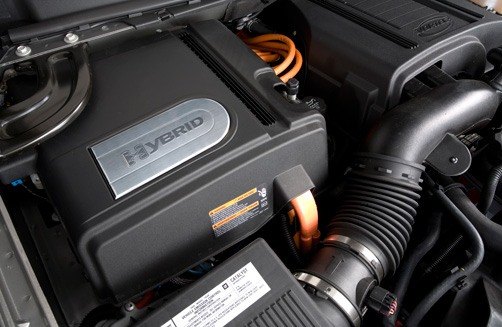















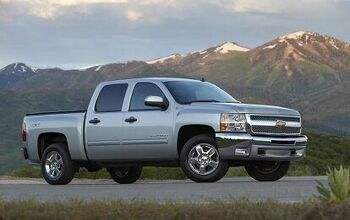

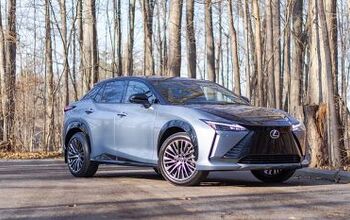
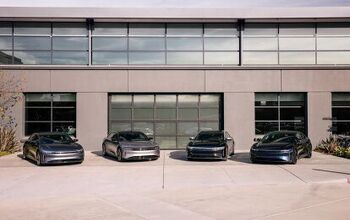
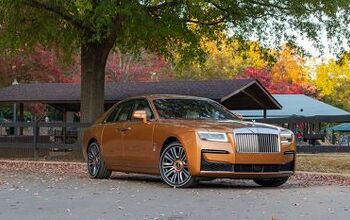
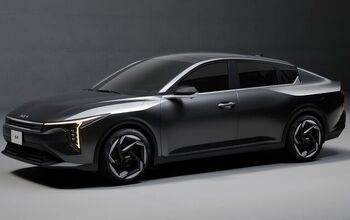


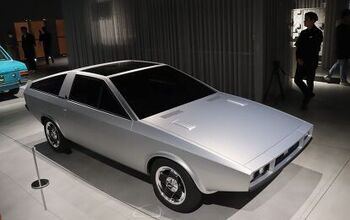

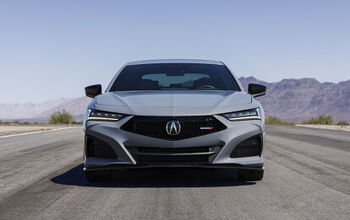
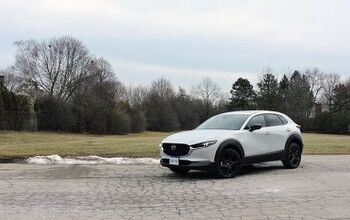



Comments
Join the conversation